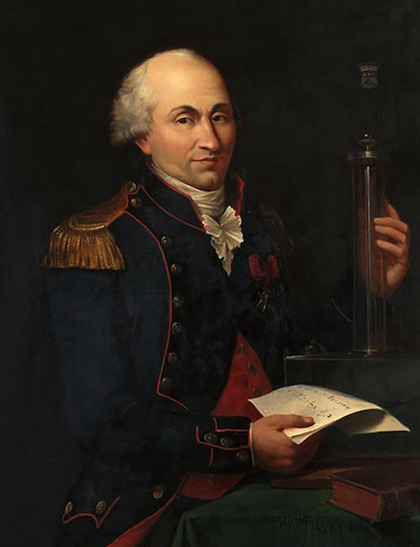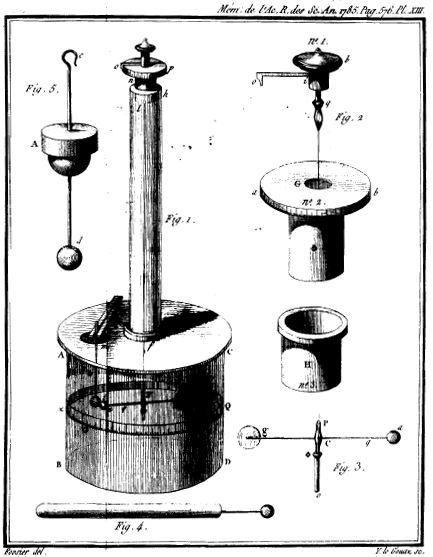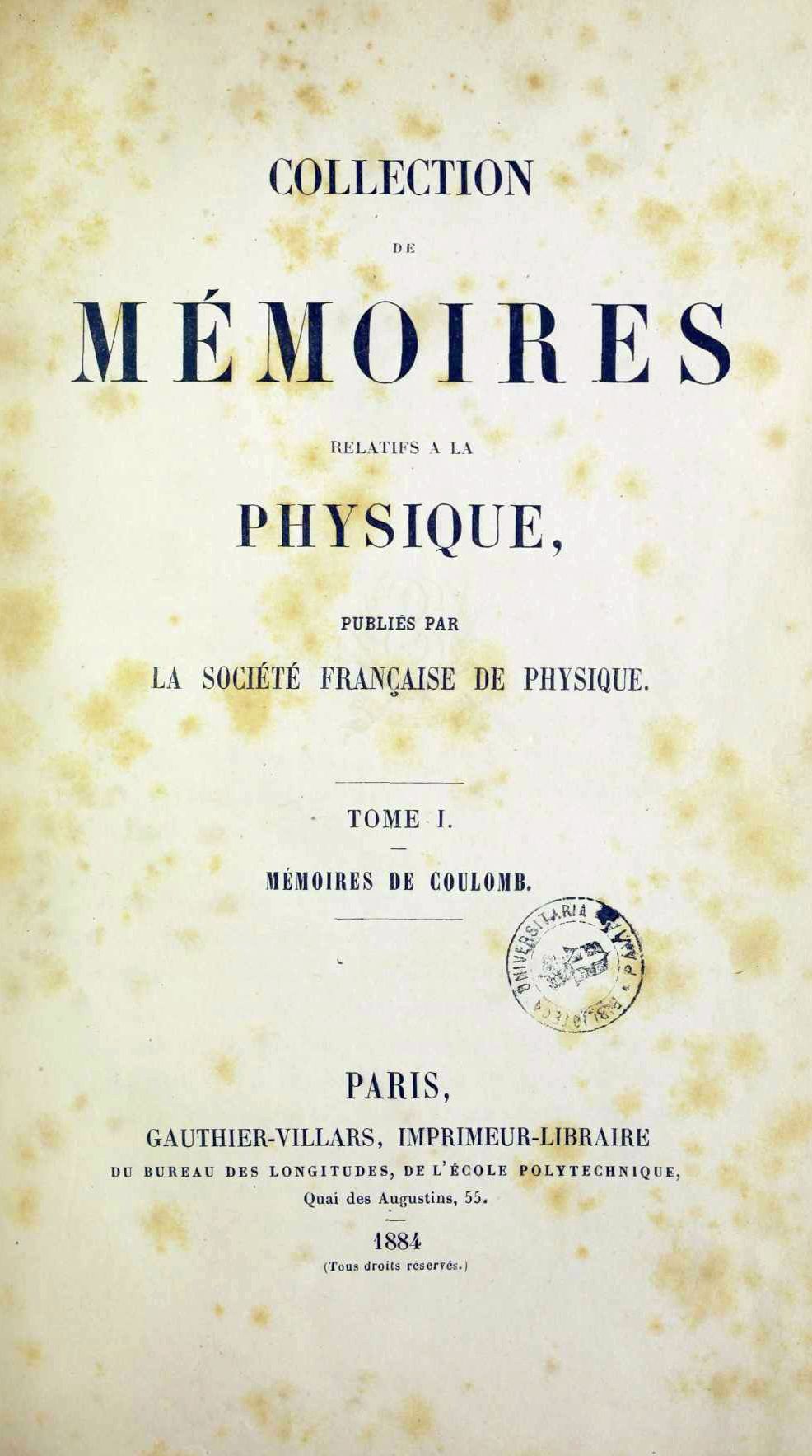
Whether you are working with friction, electricity, or magnetism, odds are that you will run across the work of Charles-Augustin de Coulomb. This French engineer, officer, and physicist spent his life working as a military engineer and conducting research for the French Academy of Science. To celebrate this famous physicist’s birthday let’s explore his life and legacy.
Coulomb’s Engineering Foundation
Charles-Augustin de Coulomb was born on June 14, 1736, in Angouleme, France. He attended the Collège Mazarin in Paris before pursuing his passion for engineering with the help of Charles-Étienne Camus, a famous French mathematician. With Camus as his tutor, Coulomb successfully enrolled in the Royal Engineering School of Mézières and later graduated as a lieutenant in the Corps of Engineers. His first assignment as a military engineer sent him to Martinique, part of the French West Indies in the Eastern Caribbean, where he oversaw the construction of Fort Bourbon (modern-day Fort Desaix). Over the course of eight years (1764–1772), Coulomb worked on the fortification, which gave him practical expertise that played a major role in his later memoirs on mechanics.

Charles-Augustin de Coulomb. Image in the public domain in the United States, via Wikimedia Commons.
Coulomb returned to France in 1773 and presented his treatise on the mathematical solutions he implemented for engineering problems in Martinique to the French Academy of Science, a learned society, in Paris. He was next sent to Rochefort to collaborate with fellow military engineer Marquis de Montalembert on the construction of a wooden fort near Ile-d’Aix. Simultaneously, Coulomb continued his research, using local shipyards as laboratories for his experiments. This led to the investigation of the laws of friction he published soon after.
The Study of Tribology and the Torsion Balance
The Theory of Simple Machines, Coulomb’s major memoir on friction from 1781, proved to be a pivot point for his career. From this point forward, Coulomb primarily focused on theoretical pursuits and only advised on engineering projects sparingly. In this memoir, Coulomb confirmed Amontons’ laws of friction; displayed their limitations; and formulated what would become Coulomb’s law of friction, which states that kinetic friction is independent of sliding velocity. This work proved to be one of the more comprehensive studies of friction undertaken in the 18th century, winning him the Grand Prix from the Academy of Science and contributing to his nomination to a permanent post within the society.
From his work with friction, Coulomb shifted focus to the construction of different torsion balances with the goal of making observations on the laws of elasticity. His findings within the resulting work, Theoretical and Experimental Research on the Force of Torsion, and on the Elasticity of Metal Wires, have been largely overshadowed by the devices he created to conduct these experiments. Coulomb announced within this memoir that he had constructed an electric and a magnetic balance capable of studying the interaction of electrically charged bodies. These laid the groundwork for his memoirs on electricity and magnetism.

The torsion balance used by Coulomb in his experiments. Image licensed in the public domain in the United States via Wikimedia Commons.
Electromagnetics Findings and Coulomb’s Law
Between 1784 and 1789 Coulomb wrote his most impactful memoirs. Within these works, he sought to determine the governing laws of electrified bodies, with a particular interest in an explanation for how electric and magnetic fluids act and how electricity is dissipated. The results, particularly from his First Memoir on Electricity and Magnetism, pointed to a repulsive force between the two similarly charged balls within his torsion balance that was equal to the inverse ratio of the square of the distances.

Coulomb’s collection of memoirs reprinted in 1884. Image licensed in the public domain in the United States via Wikimedia Commons.
This led to what is now known as Coulomb’s law: The measure of the electrostatic force of attraction or repulsion between two point charges is proportional to the product of the charges and inversely proportional to the squared distance between them. This appraisal of the amount of force between two stationary, electrically charged particles made it possible to discuss the quantity of electric charge in a meaningful way.
His seven memoirs on electricity and magnetism covered numerous topics. Most importantly, they explain the laws of attraction and repulsion between magnetic poles and electric charges — even though Coulomb himself didn’t express any relationship between the two.
Coulomb’s Legacy
He continued to publish memoirs and participate in the work of committees within the French Academy of Science until its dissolution during the French Revolution. Though Coulomb retired in response to this change, he eventually returned to Paris and joined the newly formed Institute of France in 1795. He even returned to public service as the country’s education system supervisor until his death in 1806.
Ultimately, his impact on the fields of electricity and magnetism has earned him a place among France’s greatest physicists, even earning him a nameplate on the Eiffel Tower. His work and experiments were foundational for the theory of electromagnetism and, aside from Coulomb’s law, there are over a dozen terms that bear his name including the SI unit of electric charge. From his engineering projects for France to his numerous scientific achievements, Charles-Augustin de Coulomb is truly worthy of celebrating. Let’s all wish him a Happy Birthday!
Further Reading
- Read about the life and work of other engineers and scientists who made great contributions to the study of electricity and magnetism:
- Charles F. Brush, an engineer who brought the first electric street light to the United States
- Friedrich Paschen, a physicist who is known for his work on electrical discharges
- James Clerk Maxwell, a scientist whose work revolutionized electromagnetics
- Learn about analyzing slope stability with the shear strength reduction method, which involves the Mohr–Coulomb criterion




Comments (0)